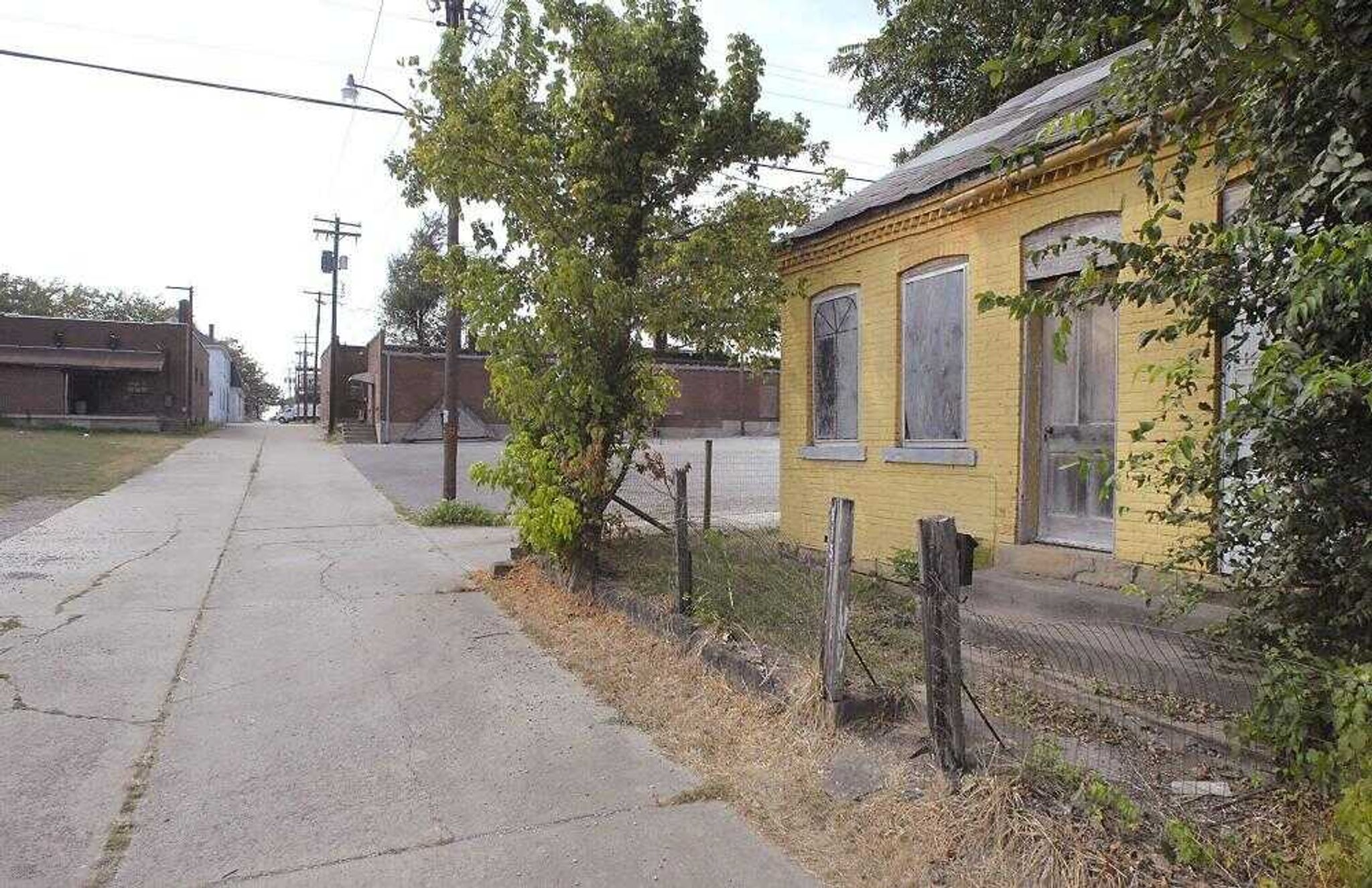Sneaking through the alley
Cape Girardeau has 13 miles of roads few people ever travel. Some of the purposes alleys were built for no longer exist -- deliveries of ice and coal, for instance. Narrow, mostly graveled and invariably poorly lighted, they get no respect in the era of four-lane highways and smooth hiking and biking trails...
Cape Girardeau has 13 miles of roads few people ever travel. Some of the purposes alleys were built for no longer exist -- deliveries of ice and coal, for instance. Narrow, mostly graveled and invariably poorly lighted, they get no respect in the era of four-lane highways and smooth hiking and biking trails.
"They are often perceived as dark, scary, isolated and dangerous," says Dr. Frank Nickell, director of the Center for Regional History at Southeast Missouri State University.
Some cities gradually are abandoning them to avoid the maintenance costs. Other cities, such as Santa Cruz, Calif., have redeveloped their alleys as pedestrian pathways connecting the city's downtown.
Cape Girardeau's downtown alleys are still used by garbage trucks and some delivery trucks and by people looking for shortcuts. A few alleys have houses on them.
When West End Boulevard was Cape Gir-ar-deau's western edge in the early days of the 20th century, the alleys behind residential and commercial streets were essential for deliveries. With the advent of cars, the first garages were built on alleys, says Nickell. "They were far from the house because there was always the risk of fire."

Those garages were filled with the smells of gasoline and oil. "There was a great fear of fire," Nickell said.
Alleys became known for other things as well. An 1883 Sanborn map of the city designates one of the alleyways as Shinbone Alley. It ran for three blocks east and west between Frederick and Sprigg streets, half a block south of Good Hope Street. Cape Girardeau historians are at a loss to pinpoint the origin of the name, so people have come up with their own explanations.
It has a rough-and-tumble reputation because the area once was home to numerous places to purchase a drink or a bottle. "After people got their paychecks they would spend a little at the watering holes," she recalled Suzanne Vaughn, whose father owned Suedekum Hardware Store in the Haarig District. "They would try to walk home and they would skin their shins," she said.
Some mornings people who'd fallen down would still be there, she said.
Thomas M. Meyer, a longtime real estate agent in the area, attributes the name to a former city official who busted his shinbone on a big rock in the alley. The official supposedly removed the rock to make the alley safe for shinbones.
Along Shinbone Alley sits a house with boarded-up windows. The house is equipped with a satellite dish and a vehicle is parked in the rear. No one answers the door.
A train of trash bins lines the blind alley that runs north and south between Main and Spanish streets. No trash bins are found in the 100 block, though, because it isn't blind and is a fire lane. Cars and trucks are prohibited from parking in alleys because they must remain accessible to emergency vehicles. A block further north, the alley intersects with Old Cape Alley, which runs east and west between Main and Spanish streets. Model T cars once drove through that narrow passage.
The north-south alley between Merriwether and Independence and Lorimier and Spanish streets is home to the Downtown Scholarship Garden, a verdant masterpiece of tomatoes and other vegetables next to a gravel alley.
Because they are hidden and seldom lighted, alleys sometimes attract crimes. A young Cape Girardeau man was shot and killed in an alley south of William Street a few years ago.
Sgt. Barry Hovis of the Cape Girardeau Police Department said he paid as much attention to the alleys as to the streets when he was on patrol. "If somebody wanted to break in, they could go down the alley," he said. "When I saw someone I would wonder why they would be walking in an unlit alley."
Alleys have played an important role in the evolution of American towns, Nickell says. "As towns have changed and residential areas and commercial areas have changed there is no longer a need for the traditional alleys."
sblackwell@semissourian.com
335-6611, extension 137
Connect with the Southeast Missourian Newsroom:
For corrections to this story or other insights for the editor, click here. To submit a letter to the editor, click here. To learn about the Southeast Missourian’s AI Policy, click here.











